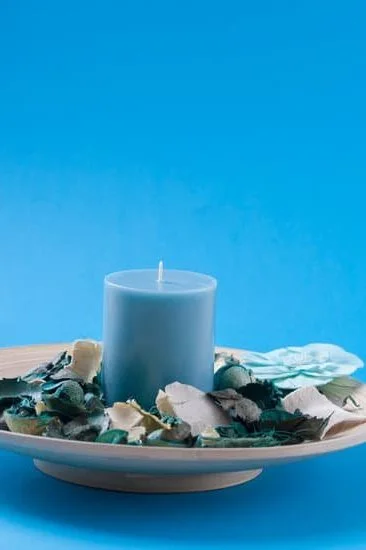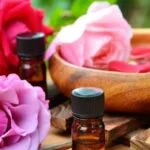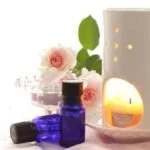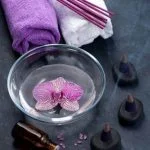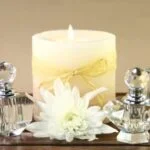Aromatherapy is a popular alternative therapy that utilizes the power of essential oils to promote healing and well-being. By harnessing the natural properties of plants, aromatherapy aims to enhance physical, emotional, and mental health. Essential oils have been used for thousands of years in various cultures around the world, and their therapeutic benefits continue to be recognized and embraced today.
In this article, we will delve into the fascinating world of aromatherapy, exploring its history, scientific basis, and how it works to improve our overall well-being. We will discover how our olfactory system plays a vital role in connecting scents to emotions and the brain. Additionally, we will explore the wide array of benefits aromatherapy offers, such as stress relief, relaxation, improved mood, and more.
Furthermore, we will discuss different popular essential oils and their functions. From lavender for sleep to peppermint for focus, each oil has its own unique properties that cater to specific needs. We will also uncover various techniques used in aromatherapy, including diffusers, massage oils, inhalation, and topical application. Safety precautions and considerations will be outlined to ensure beneficial use and prevent any adverse reactions.
By understanding the principles of aromatherapy and its potential benefits for well-being and emotional health, individuals can integrate this holistic approach into their daily lives. Whether it is creating custom blends or using specific scents in different environments like the bedroom or office space, integrating aromatherapy can greatly contribute to one’s overall quality of life.
So let’s embark on this aromatic journey together as we unravel the wonders of aromatherapy: an ancient practice that continues to captivate people worldwide with its remarkable ability to awaken our senses and rejuvenate our mind, body, and soul.
History of Aromatherapy
Aromatherapy has a rich history that dates back to ancient times. The use of aromatic plants and their oils for therapeutic purposes can be traced back thousands of years across different cultures and civilizations. In this section, we will explore the fascinating journey of aromatherapy from its origins to its modern uses today.
Ancient Roots
The roots of aromatherapy can be found in ancient civilizations such as Egypt, China, India, and Greece. In Egypt, for example, essential oils were used in religious ceremonies and embalming practices. The Egyptians believed that these oils had both medicinal and spiritual properties. Similarly, in ancient China and India, aromatic plants were used for their healing benefits and were an integral part of traditional medicine systems like Ayurveda.
Rediscovery and Modern Development
Although the use of essential oils continued through the Middle Ages and Renaissance period, it was during the late 19th century that the term “aromatherapy” was coined by French chemist René-Maurice Gattefossé. Gattefossé discovered the healing properties of lavender oil after using it to treat a burn on his hand. This incident sparked his interest in the therapeutic effects of essential oils.
It was not until the 20th century that aromatherapy gained wider recognition as a holistic approach to well-being. French doctors Jean Valnet and Marguerite Maury played significant roles in further developing aromatherapy as a legitimate practice with scientific foundations. Valnet explored the antimicrobial properties of essential oils during World War II when resources for traditional medicine were limited. Maury contributed to incorporating massage techniques into aromatherapy treatments.
Today, aromatherapy is widely appreciated around the world for its potential physical and psychological benefits. It has evolved into a complementary therapy used alongside conventional medical treatments or as part of self-care routines.
The Influence of Traditional Medicine
Aromatherapy owes much to traditional medicine systems like Ayurveda and Traditional Chinese Medicine (TCM). These ancient practices have long recognized the therapeutic potential of plants and their essential oils. The knowledge and wisdom passed down through generations have contributed greatly to the understanding and application of aromatherapy today.
The Science Behind Aromatherapy
Aromatherapy, as a holistic healing practice, has gained popularity in recent years due to its potential benefits for well-being and emotional health. But what exactly is the science behind aromatherapy? To understand how it works, it is important to delve into the properties of essential oils.
Essential oils are concentrated extracts derived from plants, containing their natural fragrance. These oils are obtained through various extraction methods such as distillation or cold pressing. Each essential oil possesses unique chemical components that contribute to its specific properties and therapeutic effects.
Different essential oils have different functions and can be used to address various concerns. For example, lavender oil is commonly associated with promoting sleep and relaxation, while peppermint oil is known for its invigorating and focus-enhancing properties. Some other popular essential oils include eucalyptus for respiratory support, tea tree for skin issues, and chamomile for calming purposes.
The properties of essential oils can be attributed to their chemical composition. These compounds interact with our olfactory system when inhaled or applied topically, triggering responses in the brain that affect our emotions and overall well-being. When inhaled, the molecules of essential oils enter the nasal cavity and stimulate the olfactory receptors located there. The olfactory system then sends signals to the limbic system – a part of the brain responsible for emotions and memories.
How Aromatherapy Works
The sense of smell is a powerful tool that plays a significant role in our daily lives. It allows us to recognize and identify different scents, but did you know that it also has a direct link to our emotions and the brain? This is where aromatherapy comes into play. Aromatherapy works by utilizing the olfactory system to stimulate certain reactions in the body, promoting relaxation, stress relief, improved mood, and overall well-being.
The Olfactory System: An Overview
The olfactory system is responsible for our sense of smell. It consists of specialized cells located in our nasal passages that detect odor molecules in the air. When we inhale these molecules, they bind to receptors within these cells and send signals directly to the brain’s limbic system – the area associated with emotions, memories, and behavior. This connection between scent and emotional response is why specific smells can trigger vivid memories or intense feelings.
The Role of Essential Oils
Essential oils are the backbone of aromatherapy. They are highly concentrated extracts derived from plants and contain various therapeutic properties. Each essential oil has its unique chemical composition that gives it specific benefits. For example, lavender oil is known for its calming properties, while peppermint oil can help improve focus and mental clarity.
When used in aromatherapy practices such as inhalation or topical application, essential oils release their aromatic compounds into the air or penetrate the skin. These compounds then interact with our olfactory system, activating specific receptors and triggering physiological responses within the body.
The Impact on Emotions and the Brain
Thanks to the close connection between the olfactory system and emotions stored in the limbic system, aromatherapy has a powerful impact on our emotional well-being. When we inhale essential oils that promote relaxation or uplift mood, they can help reduce stress levels by calming down an overactive amygdala, the brain’s fear center. This calming effect leads to a decrease in the production of stress hormones and an increase in the release of mood-enhancing neurotransmitters like serotonin.
Moreover, studies have shown that certain essential oils can directly affect brain waves, promoting a state of relaxation and tranquility. For example, research has found that inhaling lavender oil can increase alpha brain waves, which are associated with a relaxed mental state.
Benefits of Aromatherapy
Aromatherapy has been known for its numerous benefits, including stress relief, relaxation, improved mood, and more. The use of essential oils in aromatherapy has been found to have a positive impact on both physical and emotional well-being.
Stress Relief
One of the main benefits of aromatherapy is its ability to reduce stress and promote relaxation. Essential oils such as lavender, chamomile, and bergamot have been shown to have calming properties that can help soothe the mind and body. Studies have demonstrated that these oils can help lower cortisol levels, a hormone associated with stress.
Improved Mood
Aromatherapy is also known for its mood-enhancing effects. Certain essential oils like lemon, peppermint, and ylang-ylang have uplifting scents that can boost mood and increase energy levels. These oils are often used in diffusers or applied topically to provide a refreshing and invigorating experience.
Enhanced Sleep Quality
Many people struggle with sleep issues such as insomnia or interrupted sleep patterns. Aromatherapy can help improve sleep quality by promoting relaxation and creating a peaceful environment. Lavender oil is particularly popular for its sedative properties that aid in reducing anxiety and promoting deep sleep.
In addition to these benefits, aromatherapy has also been reported to relieve headaches, ease muscle tension, improve digestion, boost immune function, and alleviate symptoms of depression. It is important to note that individual responses to aromatherapy may vary, so it’s best to experiment with different essential oils to find the ones that work best for you.
By incorporating aromatherapy into your daily routine or engaging in specific practices like using it during massages or adding it to bathwater, you can experience the full range of benefits that this ancient practice has to offer. Whether it’s through inhalation or topical application, the power of aromatherapy can positively impact your overall well-being and emotional health.
Popular Essential Oils and their Functions
Essential oils have gained popularity in recent years for their various therapeutic benefits and uses. They are concentrated plant extracts that contain the natural fragrance and characteristics of the plant they are derived from. Different essential oils have different functions and properties, making them suitable for a wide range of purposes.
One popular essential oil known for its calming properties is lavender. Lavender oil has been used for centuries to promote relaxation and improve sleep quality. Research has shown that inhaling the scent of lavender can help reduce anxiety and improve sleep duration and quality. It can also help alleviate symptoms of insomnia and promote a sense of calmness and relaxation.
Peppermint essential oil is another commonly used oil with multiple functions. Its invigorating scent has been found to enhance focus, concentration, and mental clarity. Inhaling peppermint oil may help stimulate the mind, boost alertness, and improve cognitive performance. This makes it an ideal choice for those who need to stay focused during work or study sessions.
Another essential oil with versatile uses is tea tree oil. Known for its antiseptic and antimicrobial properties, tea tree oil is often used in skincare products to treat acne, fungal infections, and other skin conditions. It has also been found to have potential insect repellent properties.
| Essential Oil | Main Functions |
|---|---|
| Lavender | Promotes sleep, reduces anxiety |
| Peppermint | Improves focus, mental clarity |
| Tea Tree | Antiseptic, treats skin conditions |
It’s important to note that while these essential oils have been found to have certain benefits, individual experiences may vary. It is also crucial to use essential oils safely and following proper dilution guidelines. Consulting with a healthcare professional or aromatherapist can provide further guidance on the appropriate use and dosage of essential oils for specific purposes.
Different Aromatherapy Techniques
Aromatherapy offers various techniques to enjoy the benefits of essential oils. These techniques include diffusers, massage oils, inhalation, and topical application. Each method provides a unique way to experience the therapeutic effects of aromatherapy.
Diffusers
Using diffusers is one of the most popular ways to enjoy aromatherapy. These devices disperse essential oils into the air, allowing you to inhale the scent and experience its benefits. Diffusers come in different types such as ultrasonic diffusers, nebulizing diffusers, and heat-based diffusers. They can be used in various settings like bedrooms, living rooms, offices, or even during yoga or meditation sessions.
Massage Oils
Massage is not only a great way to relax but also an effective method for incorporating aromatherapy into your self-care routine. By blending essential oils with carrier oils like sweet almond oil or coconut oil, you can create massage oils that promote relaxation, relieve muscle tension, and enhance overall well-being. Applying these massage oils on your skin during a massage helps the essential oils penetrate into your body and provide their therapeutic benefits.
Inhalation
Inhalation involves directly inhaling essential oils through techniques such as steam inhalation or using inhalers. Steam inhalation is done by adding a few drops of essential oil to hot water and inhaling the vapor deeply through your nose while covering your head with a towel to trap the steam. Inhalers are portable devices that allow you to enjoy the benefits of aromatherapy on-the-go by using pre-diluted essential oil blends.
Topical Application
Applying essential oils topically allows for direct absorption through your skin. However, it is important to note that most essential oils need to be diluted before applying them directly on the skin. Diluting essential oils with carrier oils ensures their safety and effectiveness. Topical application can be done through techniques like massage, adding a few drops to bathwater, or using them in skincare products such as lotions or creams.
By exploring these different aromatherapy techniques, you can find the one that suits your preferences and lifestyle the best. Each method offers a unique way to incorporate essential oils into your daily routine and enhance your emotional well-being.
Safety Precautions and Considerations
When using aromatherapy, it is essential to take certain safety precautions and considerations into account. This will ensure that you enjoy the therapeutic benefits of essential oils without any negative consequences. Three important aspects to keep in mind are dilution ratios, possible allergies, and contraindications.
Firstly, dilution ratios are crucial when using essential oils topically or for inhalation. Essential oils are highly concentrated substances and should never be used undiluted on the skin. Diluting essential oils with carrier oils such as almond oil or coconut oil helps to reduce the risk of skin irritation or sensitization.
The appropriate ratio is generally 2-3 drops of essential oil per teaspoon (5 ml) of carrier oil for adults. However, this ratio may need to be adjusted based on the specific oil being used and the individual’s sensitivity levels.
Additionally, it is important to be aware of any possible allergies before using an essential oil. Some individuals may have an allergic reaction or sensitivity to certain oils, even if they have been safely used by others. Before applying an essential oil topically or inhaling it, perform a patch test on a small area of your skin.
This involves diluting the oil and applying a small amount on your inner forearm. Monitor for any adverse reactions such as redness, itching, or swelling for at least 24 hours before proceeding with full use.
Lastly, certain medical conditions or medications may have contraindications with specific essential oils. For example, individuals with high blood pressure should avoid using rosemary essential oil as it can raise blood pressure levels. It is crucial to consult with a healthcare professional before incorporating aromatherapy into your routine if you have any chronic health conditions or are taking medications.
In summary, taking safety precautions when using aromatherapy ensures a positive experience and reduces the risk of any adverse effects. Dilution ratios, possible allergies, and contraindications should always be considered before using essential oils. By following these guidelines, you can safely enjoy the therapeutic benefits of aromatherapy for your well-being and emotional health.
| Safety Precautions | Data |
|---|---|
| Dilution Ratios | 2-3 drops of essential oil per teaspoon (5 ml) of carrier oil for adults |
| Possible Allergies | Perform a patch test on a small area of skin before full use |
| Contraindications | Consult with a healthcare professional for chronic health conditions or medications |
DIY Aromatherapy
Aromatherapy offers a unique and personalized experience by allowing individuals to create their own blends and customize scents based on their personal preferences. This do-it-yourself approach not only allows for creativity and experimentation but also ensures that the aromatherapy experience aligns with individual needs and desires. Here are some tips on how to create your own blends and customize scents in aromatherapy:
- Selecting essential oils: The first step in creating a personalized aromatherapy blend is choosing the essential oils that resonate with you. Consider the properties, benefits, and aroma of different essential oils. For example, if you’re looking for relaxation, lavender or chamomile may be ideal choices. On the other hand, if you’re seeking an energizing effect, citrus oils like lemon or orange can be invigorating.
- Blending essential oils: Once you have selected the oils you want to use, it’s time to start blending them together. It’s important to keep in mind that blending too many oils can result in a confusing scent profile. Start with three or four essential oils and experiment with different ratios until you achieve your desired aroma. You can use a small glass bottle or rollerball container for easy application and storage.
- Customizing scent strength: Another advantage of DIY aromatherapy is the ability to adjust the scent strength according to individual preferences. Beginners might prefer a milder scent, while others may enjoy a stronger aroma. To vary the intensity of your blend, consider adjusting the number of drops of each oil you use or diluting your blend with a carrier oil such as jojoba or sweet almond oil.
- Experimenting with combinations: Aromatherapy provides endless opportunities for creative expression by allowing individuals to experiment with different combinations of essential oils. Don’t hesitate to mix and match different scents to find unique blends that suit your personal tastes. Keep track of your favorite combinations, as you can always adjust the ratio or add new oils in future blends.
By engaging in DIY aromatherapy, you can unlock the full potential of this practice and cater it specifically to your needs. Whether you’re seeking relaxation, energy, or something in between, creating your own blends and customizing scents allows for a truly immersive and personalized experience. So don’t be afraid to get creative, experiment with different oils, and enjoy the benefits of aromatherapy tailored just for you.
Integrating Aromatherapy into Daily Life
Aromatherapy is not limited to special occasions or spa treatments; it can be easily incorporated into our daily lives to enhance our well-being and emotional health. By utilizing aromatherapy in different settings such as the bedroom, office, and during self-care activities, we can create environments that promote relaxation, focus, and overall balance.
In the bedroom, aromatherapy can be particularly beneficial for promoting restful sleep. Many essential oils have calming properties that help to reduce anxiety and promote relaxation. Lavender essential oil is a popular choice for its sedative effects and ability to improve sleep quality.
One way to use aromatherapy in the bedroom is by using a diffuser or creating a custom linen spray using lavender oil diluted with water. Spraying the mixture on pillows or bedding before sleep can create a soothing environment conducive to deep sleep.
In the office, where stress and distractions are common, aromatherapy can be effective in improving focus and productivity. Peppermint essential oil has been shown to enhance alertness and concentration levels. One method of incorporating this scent into your workspace is using an essential oil diffuser or inhaler. Alternatively, you can dilute peppermint oil with a carrier oil and apply it topically on pulse points such as wrists or temples for a quick pick-me-up during long work hours.
During self-care activities such as yoga or meditation practices, aromatherapy can be used to enhance relaxation and create a serene ambiance. Essential oils like frankincense and sandalwood are known for their grounding properties that help calm the mind and promote mindfulness. These oils can be added to a personal inhaler or diffuser necklace for easy access during self-care sessions.
By integrating aromatherapy into our daily lives in specific settings like the bedroom, office, or during self-care activities, we can create personalized environments that support our overall well-being. Each essential oil has unique properties and benefits, allowing us to customize scents based on individual preferences and needs. With a variety of aromatherapy techniques such as diffusers, inhalation, or topical application, incorporating aromatherapy into daily life can be a simple and enjoyable way to enhance wellness and emotional health.
| Aromatherapy Setting | Recommended Essential Oils |
|---|---|
| Bedroom | Lavender |
| Office | Peppermint |
| Self-Care Activities | Frankincense, Sandalwood |
Conclusion
Aromatherapy is a powerful tool that has been used for centuries to promote well-being and emotional health. From its ancient roots to its modern applications, the use of essential oils and their scents has proven to have numerous benefits. The olfactory system’s connection to emotions and the brain plays a crucial role in how aromatherapy works.
The benefits of aromatherapy are vast and can greatly enhance one’s overall quality of life. By relieving stress, promoting relaxation, improving mood, and aiding in sleep, aromatherapy offers a natural and holistic approach to wellness. Different essential oils have distinct functions, such as lavender for sleep or peppermint for focus, allowing individuals to tailor their aromatherapy experience according to their specific needs.
There are various techniques through which aromatherapy can be enjoyed. Diffusers, massage oils, inhalation, and topical application allow individuals to incorporate aromatherapy into their daily lives in different ways. However, it is crucial to consider safety precautions when using essential oils. Dilution ratios should be followed carefully, potential allergies should be taken into account, and contraindications with certain medications or conditions need to be considered.
By creating your own blends and customizing scents based on personal preferences, DIY aromatherapy allows individuals to further personalize their experience. This adds an extra level of enjoyment while reaping the benefits that essential oils provide.
Integrating aromatherapy into daily life is easy once you understand its potential benefits and various applications. Whether it’s incorporating aromatherapy into your bedroom routine for better sleep or using it in your office space for increased focus and productivity or even incorporating it into self-care activities such as baths or meditation sessions-the possibilities are endless.
In conclusion, the power of aromatherapy lies in its ability to positively impact our well-being and emotional health through the use of essential oils’ scents. Its long history combined with modern scientific understanding has solidified it as a popular and effective practice. So why not give aromatherapy a try? Discover the joy and benefits it can bring to your life and experience the transformative effects of this ancient practice.
Frequently Asked Questions
What does aromatherapy do to the brain?
Aromatherapy is believed to have a direct impact on the brain due to the powerful effects of certain scents on our olfactory system. When we inhale essential oils, the molecules are detected by receptor cells located in our nasal cavity. These cells then send signals to the olfactory bulb, which is connected to various regions of the brain, including those involved in emotions and memory.
As a result, aromatherapy can trigger reactions that affect mood, stress levels, and cognitive function. For instance, scents like lavender and chamomile have shown calming effects on the brain, while citrusy scents like lemon and grapefruit can have an invigorating effect.
What is the process of aromatherapy?
The process of aromatherapy generally involves using essential oils extracted from plants through various methods such as steam distillation or cold pressing. These highly concentrated extracts are often diluted with carrier oils or used in diffusers to release their aromatic properties into the air for inhalation. Essential oils can also be applied topically after being mixed with carrier oils so that they are safely absorbed through the skin.
Each essential oil has its own unique chemical makeup and aroma profile, which determines its specific therapeutic benefits. The selection of oils and their application method can vary depending on individual needs or preferences.
Does aromatherapy have any real benefits?
Aromatherapy has been studied extensively for its potential benefits and has shown promising results in several areas. Research suggests that certain essential oils have antimicrobial properties, assisting in killing bacteria and viruses when used appropriately. Additionally, aromatherapy has been found to have positive effects on stress reduction and relaxation by activating neurotransmitters associated with mood regulation in the brain.
Some studies also suggest potential analgesic properties of certain essential oils which may help relieve pain symptoms in some individuals. However, it is important to note that while aromatherapy can be a complementary approach for overall well-being, it should not replace traditional medical treatments for serious health conditions without consulting a healthcare professional.

Are you looking for a natural way to improve your health and wellbeing?
If so, aromatherapy may be the answer for you.

